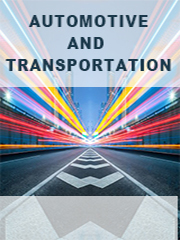TOP CATEGORY: Chemicals & Materials | Life Sciences | Banking & Finance | ICT Media

Download Report PDF Instantly
Report overview
The global Automotive Anti-Lock Braking System (ABS) market was valued at US$ 42360 million in 2022 and is projected to reach US$ 64630 million by 2029, at a CAGR of 6.2% during the forecast period. The influence of COVID-19 and the Russia-Ukraine War were considered while estimating market sizes.
This report aims to provide a comprehensive presentation of the global market for Automotive Anti-Lock Braking System (ABS), with both quantitative and qualitative analysis, to help readers develop business/growth strategies, assess the market competitive situation, analyze their position in the current marketplace, and make informed business decisions regarding Automotive Anti-Lock Braking System (ABS). This report contains market size and forecasts of Automotive Anti-Lock Braking System (ABS) in global, including the following market information:
The U.S. Market is Estimated at $ Million in 2022, While China is Forecast to Reach $ Million.
Pneumatic Anti-Lock Braking System Segment to Reach $ Million by 2029, with a % CAGR in next six years.
The global key manufacturers of Automotive Anti-Lock Braking System (ABS) include Robert Bosch, Continental, Delphi Automotive, TRW Automotive, Hitachi Automotive, Autoliv, Haldex, WABCO and Kormee, etc. in 2022, the global top five players have a share approximately % in terms of revenue.
We surveyed the Automotive Anti-Lock Braking System (ABS) manufacturers, suppliers, distributors and industry experts on this industry, involving the sales, revenue, demand, price change, product type, recent development and plan, industry trends, drivers, challenges, obstacles, and potential risks.
Total Market by Segment:
Global Automotive Anti-Lock Braking System (ABS) Market, by Type, 2018-2023, 2024-2029 ($ Millions) & (K Units)
Global Automotive Anti-Lock Braking System (ABS) Market Segment Percentages, by Type, 2022 (%)
Global Automotive Anti-Lock Braking System (ABS) Market, by Application, 2018-2023, 2024-2029 ($ Millions) & (K Units)
Global Automotive Anti-Lock Braking System (ABS) Market Segment Percentages, by Application, 2022 (%)
Global Automotive Anti-Lock Braking System (ABS) Market, By Region and Country, 2018-2023, 2024-2029 ($ Millions) & (K Units)
Global Automotive Anti-Lock Braking System (ABS) Market Segment Percentages, By Region and Country, 2022 (%)
Competitor Analysis
The report also provides analysis of leading market participants including:
Key companies Automotive Anti-Lock Braking System (ABS) revenues in global market, 2018-2023 (Estimated), ($ millions)
Key companies Automotive Anti-Lock Braking System (ABS) revenues share in global market, 2022 (%)
Key companies Automotive Anti-Lock Braking System (ABS) sales in global market, 2018-2023 (Estimated), (K Units)
Key companies Automotive Anti-Lock Braking System (ABS) sales share in global market, 2022 (%)
Further, the report presents profiles of competitors in the market, key players include:
Outline of Major Chapters: